Country United States State Mayor Andrew Gillum (D) | Population 186,411 (2013) Area 103.5 sq mi Founded 1824 | |
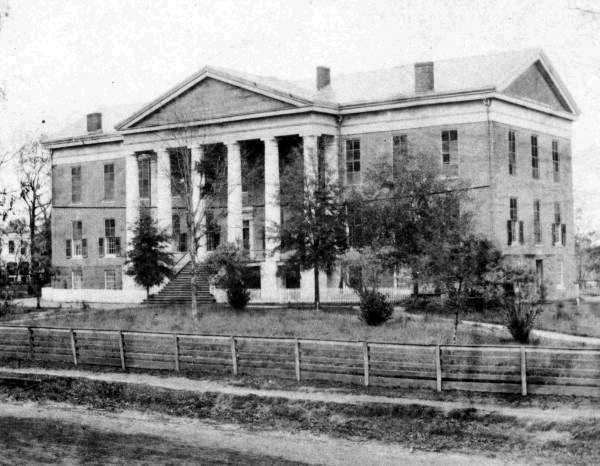 | ||
Points of interest Alfred B Maclay Gardens State Park, San Luis de Apalache, Museum of Florida History, John Gilmore Riley House, Florida State Capitol Colleges and Universities Florida State University, Florida A&M University, Tallahassee Community College, Florida State University School of Library & Information Studies, Florida A&M University – Florida State University College of Engineering | ||
Unemployment rate 5.1% (Feb 2015) | ||
Map of Tallahassee, Florida
Tallahassee is the capital of the U.S. state of Florida. It is the county seat and only incorporated municipality in Leon County. Tallahassee became the capital of Florida, then the Florida Territory, in 1824. In 2015, the population was 189,907, making the 7th largest city in the U.S state of Florida, and the 126th-largest city in the United States. The population of the Tallahassee metropolitan area was 377,924 as of 2015. Tallahassee is the largest city in the Northwest Florida region as well as the main center for trade and agriculture in the Florida Big Bend and Southwest Georgia regions.
Contents
- Map of Tallahassee Florida
- Cspan cities tour tallahassee floridas early constitutions
- Lakeside rv park tallahassee fl
- History
- State capital
- 1900present
- Geography
- Nearby cities and suburbs
- Neighborhoods
- Urban planning and expansion
- Sprawl and Compact Growth
- Climate
- Demographics
- Languages
- Government and politics
- Consolidation
- Federal representation and offices
- Flag
- Primary and secondary
- Florida State University
- Florida AM University
- Tallahassee Community College
- List of other colleges
- Economy
- Top employers
- Entertainment and performing arts
- Museums
- Festivals and events
- City accolades
- Sports
- Television
- Radio
- Public safety
- Places of interest
- Aviation
- Defunct airports
- Mass transit
- Intercity bus
- Railroads
- Defunct railroads
- Major highways
- Notable Tallahassee groups and organizations
- Namesakes
- Sister cities
- Notable people
- State Associations Based in Tallahassee
- References
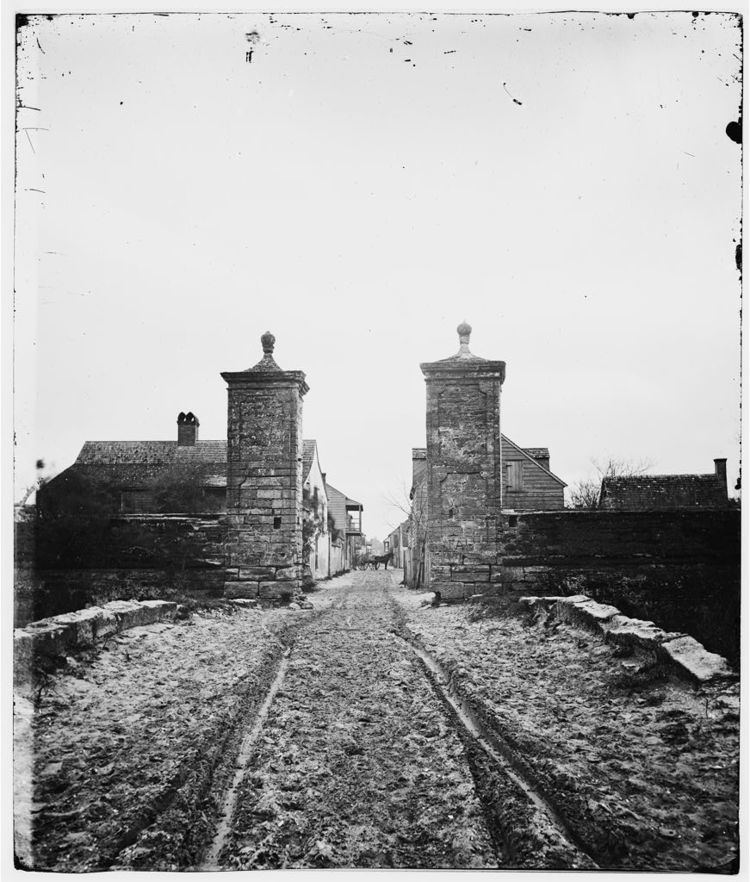
Tallahassee is home to Florida State University, ranked the nation's thirty-third best public university by U.S. News & World Report. It is also home to Florida A&M University, one of the country's largest historically black universities by total enrollment. Tallahassee Community College is a large community college which serves mainly as a feeder school to both Florida State and Florida A&M. Tallahassee qualifies as a significant college town with a student population exceeding 70,000.
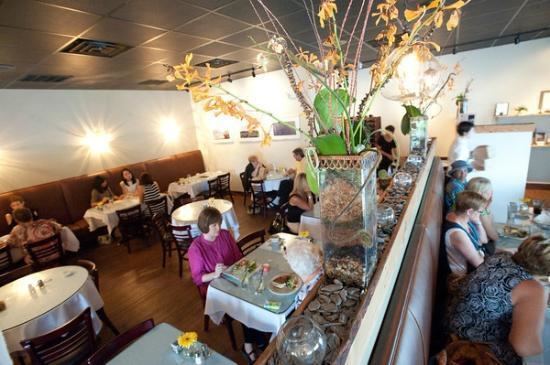
Tallahassee is home to the Florida State Capitol, Supreme Court of Florida, Florida Governor's Mansion, and nearly 30 state agency headquarters. The city is also known for its large number of law firms, lobbying organizations, trade associations and professional associations, including the Florida Bar and the Florida Chamber of Commerce. It is also a recognized regional center for scientific research, and home to the National High Magnetic Field Laboratory. In 2015, Tallahassee was awarded the All-American City Award by the National Civic League for the second time. Tallahassee is currently ranked as the 18th best college town in the nation by Best College Reviews.
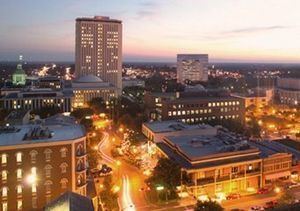
Cspan cities tour tallahassee floridas early constitutions
Lakeside rv park tallahassee fl
History
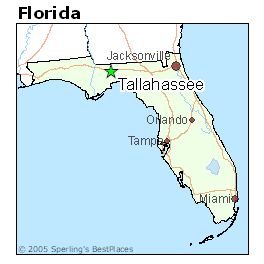
During the 17th century several Spanish missions were established in the territory of the Apalachee to procure food and labor for the settlement at St. Augustine. The largest, Mission San Luis de Apalachee, has been partially reconstructed by the state of Florida. The name "Tallahassee" is a Muskogean Indian word often translated as "old fields" or "old town", and it likely stems from the Creek (later called Seminole) Indians who migrated from Georgia and Alabama to this region in the late 18th and early 19th centuries. They found large areas of cleared land previously occupied by the Apalachee tribe. Earlier, the Mississippian Indians built mounds near Lake Jackson around AD 1200, which survive today in the Lake Jackson Archaeological State Park.
The expedition of Pánfilo de Narváez encountered the Apalachees, although it did not reach the site of Tallahassee. Hernando de Soto and his expedition occupied the Apalachee town of Anhaica in what is now Tallahassee in the winter of 1538–1539. Based on archaeological excavations this site is now known to be located about 0.5 miles (800 m) east of the present Florida State Capitol. The DeSoto encampment is believed to be the first place Christmas was celebrated in the continental United States.
During the First Seminole War, General Andrew Jackson fought two separate skirmishes in and around Tallahassee. The first battle took place on November 12, 1817. Chief Neamathla, of the village of Fowltown, just west of present day Tallahassee had refused Jackson's orders to relocate. Jackson responded by entering the village, burning it to the ground, and driving off its occupants. The Indians later retaliated, by killing 50 soldiers and civilians. Jackson reentered Florida in March 1818. According to Jackson's adjutant, Colonel Robert Butler, they "advanced on the Indian village called Tallahasse (sic) [where] two of the enemy were made prisoner."
State capital
Tallahassee became the capital of Florida during the second legislative session. It was chosen as it was roughly equidistant from St. Augustine and Pensacola, which had been the capitals of the Spanish territories of East Florida and West Florida. The first session of Florida's Legislative Council—as a territory of the United States—met on July 22, 1822 at Pensacola and members from St. Augustine traveled fifty-nine days by water to attend. The second session was in St. Augustine and required western delegates to travel perilously around the peninsula on a twenty-eight-day trek. During this session, it was decided that future meetings should be held at a halfway point. Two appointed commissioners selected Tallahassee, at that point an abandoned Apalachee settlement, as a halfway point. In 1824 the third legislative session met there in a crude log capitol building.
From 1821 through 1845 the rough-hewn frontier capital gradually grew into a town during Florida's territorial period. The Marquis de Lafayette, French hero of the American Revolution, returned for a tour of the United States in 1824. The U.S. Congress voted to give him $200,000 (the same amount he had given the colonies in 1778), US citizenship, and the Lafayette Land Grant, 36 square miles (93 km2) of land that today includes large portions of Tallahassee. In 1845 a Greek revival masonry structure was erected as the Capitol building in time for statehood. Now known as the "old Capitol", it stands in front of the high-rise Capitol building that was built in the 1970s.
Tallahassee was in the heart of Florida's Cotton Belt—Leon County led the state in cotton production—and was the center of the slave trade in Florida. During the American Civil War, Tallahassee was the only Confederate state capital east of the Mississippi not captured by Union forces, and the only one not burned. A small engagement, the Battle of Natural Bridge, was fought south of the city on March 6, 1865, just a month before the war ended.
During the 19th century the institutions that would eventually evolve into what is now Florida State University were established in Tallahassee, firmly cementing its foundations as a university town. These included the Tallahassee Female Academy (founded 1843) and the Florida Institute (founded 1854). In 1851, the Florida legislature decreed two seminaries to be built on either side of the Suwannee River, East Florida Seminary and West Florida Seminary. In 1855 West Florida Seminary was transferred to the Florida Institute building (which had been established as an inducement for the state to place the seminary in Tallahassee). In 1858, the seminary absorbed the Tallahassee Female Academy and became coeducational. Its main building was located near the northwest corner of South Copeland and West Jefferson streets, approximately where FSU's Westcott Building is today.
In 1887 the Normal College for Colored Students, ancestor of today's FAMU, opened its doors. The legislature decided that Tallahassee was the best location In Florida for a college serving negro students. Four years later its name was changed to State Normal and Industrial College for Colored Students.
After the Civil War much of Florida's industry moved to the south and east, a trend that continues today. The end of slavery hindered the cotton and tobacco trade, and the state's major industries shifted to citrus, lumber, naval stores, cattle ranching and tourism. The post-Civil War period was also when many former plantations in the Tallahassee area were purchased by wealthy northerners for use as winter hunting preserves. This included the hunting preserve of Henry L. Beadel, who bequeathed his land for the study of the effects of fire on wildlife habitat. Today the preserve is known as the Tall Timbers Research Station and Land Conservancy, nationally recognized for its research into fire ecology and the use of prescribed burning.
1900–present
Until World War II, Tallahassee remained a small southern town with virtually the entire population living within 1 mile (1.6 km) of the Capitol. The main economic drivers were the colleges and state government, where politicians met to discuss spending money on grand public improvement projects to accommodate growth in places such as Miami and Tampa Bay, hundreds of miles away from the capital. By the 1960s there was a movement to transfer the capital to Orlando, closer to the growing population centers of the state. That movement was defeated; the 1970s saw a long-term commitment by the state to the capital city, with construction of the new capitol complex and preservation of the old Florida State Capitol building.
In 1970, the Census Bureau reported the city's population as 74.0% white and 25.4% black.
In 1977 a 22-story high-rise Capitol building designed by architect Edward Durell Stone was completed, which is now the third-tallest state capitol building in the United States. In 1978 the old capitol, directly in front of the new capitol, was scheduled for demolition, but state officials decided to keep the Old Capitol as a museum.
Tallahassee was the center of world attention for six weeks during the 2000 United States Presidential election recount, which involved numerous rulings by the Florida Secretary of State and the Florida Supreme Court.
In 2016, the city suffered a direct hit by Hurricane Hermine, causing about 80% of the city proper to lose power, including Florida State University, and knocking down several trees.
Geography
Tallahassee has an area of 98.2 square miles (254.3 km2), of which 95.7 square miles (247.9 km2) is land and 2.5 square miles (6.5 km2) (2.59%) is water.
Tallahassee's terrain is hilly by Florida standards, being located at the southern end of the Red Hills Region, just above the Cody Scarp. The elevation varies from near sea level to just over 200 feet (61 m), with the state capitol on one of the highest hills in the city. The city includes two large lake basins, Lake Jackson and Lake Lafayette, and borders the northern end of the Apalachicola National Forest.
The flora and fauna are similar to those found in the mid-south and low country regions of South Carolina and Georgia. The palm trees are the more cold-hardy varieties like the state tree, the Sabal palmetto. Pines, magnolias, hickories, and a variety of oaks are the dominant trees. The Southern Live Oak is perhaps the most emblematic of the city.
Nearby cities and suburbs
Neighborhoods
Tallahassee has many neighborhoods inside the city limits. Some of the most known and defined include All Saints, Apalachee Ridge, Betton Hills, Callen, Frenchtown (the oldest historically black neighborhood in the state), Killearn Estates, Killearn Lakes Plantation, Lafayette Park, Levy Park, Los Robles, Midtown, Holly Hills, Jake Gaither/University Park, Indian Head Acres, Myers Park, Smokey Hollow, SouthWood, Seminole Manor and Woodland Drives.
Urban planning and expansion
The first plan for the Capitol Center was the 1947 Taylor Plan, which consolidated several government buildings in one downtown area. In 1974, the Capitol Center Planning Commission for the City of Tallahassee, Florida responded to growth of its urban center with a conceptual plan for the expansion of its Capitol Center. Hisham Ashkouri, working for The Architects' Collaborative, led the urban planning and design effort. Estimating growth and related development for approximately the next 25 years, the program projected the need for 2.3 million square feet (214,000 m2) of new government facilities in the city core, with 3,500 dwelling units, 100 acres (40 ha) of new public open space, retail and private office space, and other ancillary spaces. Community participation was an integral part of the design review, welcoming Tallahassee residents to provide input as well as citizens' groups and government agencies, resulting in the creation of six separate Design Alternatives. The best elements of these various designs were combined to develop the final conceptual design, which was then incorporated into the existing Capitol area and adjacent areas.
Sprawl and Compact Growth
The Tallahassee-Leon County Planning Department implements policies aimed at promoting compact growth and development, including the establishment and maintenance of an Urban Service Area. The intent of the Urban Service Area is to "have Tallahassee and Leon County grow in a responsible manner, with infrastructure provided economically and efficiently, and surrounding forest and agricultural lands protected from unwarranted and premature conversion to urban land use." The result of compact growth policies has been a significant overall reduction in the Sprawl Index for Tallahassee between 2000-2010. CityLab reported on this finding, stating that "Tallahassee laps the field, at least as far as the Sprawl Index is concerned."
Climate
Tallahassee has a humid subtropical climate (Köppen Cfa), with long summers and short, mild winters, as well as drier springs and autumns. Summers here are hotter than in the Florida peninsula and it is one of the few cities in the state to occasionally record temperatures above 100 °F or 37.8 °C, averaging 2.4 days annually. The record high of 105 °F (41 °C) was set on June 15, 2011.
Summer is characterized by brief intense showers and thunderstorms that form along the afternoon sea breeze from the Gulf of Mexico. The daily mean temperature in July, the hottest month, is 82.0 °F (27.8 °C). Conversely, the city is markedly cooler in the winter, with a January daily average temperature of 51.2 °F (10.7 °C). In addition, as Tallahassee straddles the boundary between USDA Hardiness Zones 8B and 9A, the coldest temperature of the season is typically around 20 °F or −6.7 °C. During the Great Blizzard of 1899 the city reached −2 °F (−18.9 °C), the only recorded sub-zero Fahrenheit reading in Florida and actually colder than the record low in Ketchikan, Alaska and Tromso, Norway.
Snow and ice are rare in Tallahassee. Nonetheless, over the last 100 years, the city has recorded some accumulating snowfalls; the heaviest was 2.8 inches (0.07 m) on February 13, 1958. A White Christmas occurred in 1989, and during the March 13–14, 1993 eastern U.S. “superstorm”, there were high winds and traces of snow. Historically, the city usually records at least flurries every three to four years, but on average, measurable amounts of snow 1.0 inch (2.5 cm) occur only once every 17 years. The last measurable snowfall took place December 22–23, 1989. The natural snow line (regular yearly snowfalls) ends 200 miles (320 km) to the north at Macon, Georgia, but the city averages 32 nights where the temperature falls below freezing, and, on average, the first freeze occurs on November 20, the last on March 22.
Although several hurricanes have brushed Tallahassee with their outer rain and wind bands, in recent years only Hurricane Kate, in 1985, and Hurricane Hermine, in 2016, have struck Tallahassee directly. The Big Bend area of North Florida sees several tornadoes each year during the season, but they are generally weak, cause little structural damage, and rarely hit the city directly. The most recent tornado to hit Tallahassee occurred on April 19, 2015. The tornado was classified as an EF1, and created a path as wide as 350 yards for almost 5 miles near Maclay Gardens. Damage included numerous downed tree limbs and a car crushed by a falling tree. During extremely heavy rains, some low-lying parts of Tallahassee may flood, notably the Franklin Boulevard area adjacent to the downtown and the Killearn Lakes subdivision (which is not within the city limits proper) on the north side.
Demographics
As of the 2010 census, the population of Tallahassee was estimated to be 181,376. There were 74,815 households, 21.3% of which had children under 18 living in them. 27.7% were married couples living together, 14.4% had a female householder with no husband, and 53.7% were non-families. 34.1% of all households were made up of individuals living alone and 6.7% had someone living alone who was 65 years of age or older. The average household size was 2.23 and the average family size was 2.88. Children under the age of 5 were 5.5% of the population, persons under 18 were 17.2%, and persons 65 years or older were 8.1%. The median age was 26 years. For every 100 females, there were 89.5 males. For every 100 females age 18 and over, there were 86.7 males. 57.4% of the population was White, 35.0% Black, 3.7% Asian, 0.2% American Indian and Alaska Native, 0.1% Native Hawaiian and Other Pacific Islander, 1.3% some other race, and 2.3% two or more races. 6.3% were Hispanic or Latino of any race, and 53.3% were non-Hispanic White. For the period 2009–2013, the estimated median household income was $39,524, and the per capita income was $23,778. The number of persons below the poverty level was estimated at 30.2%.
Educationally, the population of Leon County is the most highly educated population in Florida with 49.9% of the residents with either a Bachelor's, Master's, professional or doctorate degree. The Florida average is 22.4% and the national average is 24.4%.
Languages
As of 2000, 91.99% of residents spoke English as their first language, while 4.11% spoke Spanish, 0.63% spoke French, and 0.59% spoke German as their mother tongue. In total, 8.00% of the total population spoke languages other than English.
Government and politics
Tallahassee has traditionally been a Democratic city, and is one of the few cities in the South known for progressive activism. It has had a black mayor and black state representative. The city has voted Democratic throughout its history with a high voter-turnout. As of April 2007, there were 85,343 Democrats and 42,230 Republicans in Leon County. Other affiliations accounted for 22,284 voters.
Leon County's voter turnout percentage has consistently ranked among the highest of Florida's 67 counties, with a record-setting 86% turnout in the November 2008 general election.
Consolidation
Voters of Leon County have gone to the polls four times to vote on consolidation of Tallahassee and Leon County governments into one jurisdiction combining police and other city services with already shared (consolidated) Tallahassee Fire Department and Leon County Emergency Medical Services. Tallahassee's city limits would increase from 103.1 square miles (267 km2) to 702 square miles (1,820 km2). Roughly 36 percent of Leon County's 265,714 residents live outside the Tallahassee city limits.
The proponents of consolidation have stated that the new jurisdiction would attract business by its size. Merging governments would cut government waste, duplication of services, etc. Professor Richard Feiock of the Department of Public Administration of Korea University and the Askew School of Public Administration and Policy of Florida State University states that no discernible relationship exists between consolidation and the local economy.
Each time, the measure was rejected: 1968: 10,381 (41.32%)|14,740 (58.68%); 1973: 11,056 (46.23%)| 12,859 (53.77%); 1976: 20,336 (45.01%) | 24,855 (54.99%); 1992: 37,062 (39.8%) | 56,070 (60.2%).
Federal representation and offices
Tallahassee is split between Florida's 2nd congressional district and Florida's 5th congressional district.
The United States Postal Service operates post offices in Tallahassee. The Tallahassee Main Post Office is located at 2800 South Adams Street. Other post offices in the city limits include Centerville Station, Leon Station, Park Avenue Station, and Westside Station.
The National Oceanographic and Atmospheric Administration maintains a National Weather Service in Tallahassee. Their coverage-warning area includes the eastern Florida Panhandle and adjacent Gulf of Mexico waters, the north-central Florida peninsula, and parts of southeastern Alabama and southwestern Georgia.
The U.S. Army Reserve 81st Regional Support Command (USAR) opened an Army Reserve Center at 4307 Jackson Bluff Road.
The U.S. Navy Reserve Navy Operational Support Center Tallahassee (NOSC Tallahassee) is located at 2910 Roberts Avenue.
Flag
The former flag of Tallahassee is vaguely similar to the flag of Florida, a white saltire on a blue field, with the city's coat of arms, featuring the cupola of the old capitol building, at the center. The flag is an homage to the Scottish and Ulster-Scots Presbyterian heritage of the original founders of the city, most of whom were settlers from North Carolina whose ancestors had either come to America directly from Scotland, or were Presbyterians of Scottish descent from County Down and County Antrim in what has since become Northern Ireland. A more recent flag incorporates a stylized 5 point star and the city name on a white background.
Primary and secondary
Tallahassee anchors the Leon County School District. As of the 2009 school year Leon County Schools had an estimated 32,796 students, 2209 teachers and 2100 administrative and support personnel. The current superintendent of schools is Rocky Hanna. Leon County public school enrollment continues to grow steadily (up approximately 1% per year since the 1990-91 school year). The dropout rate for grades 9-12 improved to 2.2% in the 2007–2008 school year, the third time in the past four years the dropout rate has been below 3%.
To gauge performance the State of Florida rates all public schools according to student achievement on the state-sponsored Florida Comprehensive Assessment Test (FCAT). Seventy-nine percent of Leon County Public Schools received an A or B grade in the 2008–2009 school year. The overall district grade assigned to the Leon County Schools is "A". Students in the Leon County School District continued to score favorably in comparison to Florida and national averages in the SAT and ACT student assessment tests. The Leon County School District has consistently scored at or above the average for districts statewide in total ACT and SAT mean composite scores.
Florida State University
Florida State University (commonly referred to as Florida State or FSU) is an American public space-grant and sea-grant research university. Florida State is located on a 1,391.54-acre (5.631 km2) campus in the state capital of Tallahassee, Florida, United States. It is a senior member of the State University System of Florida. Founded in 1851, it is located on the oldest continuous site of higher education in the state of Florida.
The university is classified as a Research University with Very High Research by the Carnegie Foundation for the Advancement of Teaching. The university comprises 16 separate colleges and more than 110 centers, facilities, labs and institutes that offer more than 360 programs of study, including professional school programs. The university has an annual budget of over $1.7 billion. Florida State is home to Florida's only National Laboratory – the National High Magnetic Field Laboratory and is the birthplace of the commercially viable anti-cancer drug Taxol. Florida State University also operates The John & Mable Ringling Museum of Art, the State Art Museum of Florida and one of the largest museum/university complexes in the nation.
The university is accredited by the Southern Association of Colleges and Schools (SACS). Florida State University is home to nationally ranked programs in many academic areas, including law, business, engineering, medicine, social policy, film, music, theater, dance, visual art, political science, psychology, social work, and the sciences. Florida State University leads Florida in four of eight areas of external funding for the STEM disciplines (Science, Technology, Engineering and Math).
For 2017, U.S. News & World Report ranked Florida State as the 33rd best public university in the United States.
Florida Governor Rick Scott and the state legislature designated Florida State University as one of two "preeminent" state universities in the spring of 2013 among the twelve universities of the State University System of Florida.
FSU's intercollegiate sports teams, commonly known by their "Florida State Seminoles" nickname, compete in National Collegiate Athletic Association (NCAA) Division I and the Atlantic Coast Conference (ACC). The Florida State Seminoles athletics program are favorites of passionate students, fans and alumni across the United States, especially when led by the Marching Chiefs of the Florida State University College of Music. In their 113-year history, Florida State's varsity sports teams have won 20 national athletic championships and Seminole athletes have won 78 individual NCAA national championships.
Florida A&M University
Founded on October 3, 1887, Florida A&M University (FAMU) is a public, historically black university that is part of the State University System of Florida and is fully accredited by the Southern Association of Colleges and Schools. FAMU's main campus comprises 156 buildings spread over 422 acres (1.7 km2) atop the highest of Tallahassee's seven hills. The university also has several satellite campuses including a site in Orlando where its College of Law is located and sites in Miami, Jacksonville and Tampa for its pharmacy program. Florida A&M University offers 62 bachelor's degrees and 39 master's degrees. The university has 13 schools and colleges and one institute.
FAMU has 11 doctoral programs which includes 10 Ph.D. programs: chemical engineering; civil engineering; electrical engineering; mechanical engineering; industrial engineering; biomedical engineering; physics; pharmaceutical sciences; educational leadership; and environmental sciences. Top undergraduate programs are architecture; journalism; computer information sciences and psychology. FAMU's top graduate programs include pharmaceutical sciences along with public health; physical therapy; engineering; physics; master's of applied social sciences (especially history and public administration); business and sociology.
Tallahassee Community College
Tallahassee Community College (TCC) is a state college, and is a member of the Florida College System. Tallahassee Community College is accredited by the Florida Department of Education and the Southern Association of Colleges and Schools. Its primary campus is located on a 270-acre (1.092 km2) campus in Tallahassee. The institution was founded in 1966 by the Florida Legislature.
TCC currently offers Bachelor's of Science, Associate of Arts, Associate of Science, and Associate of Applied Sciences degrees. In 2013, Tallahassee Community College was listed 1st in the nation in graduating students with A.A. degrees. TCC is also the #1 transfer school in the nation to Florida State University. As of Fall 2015, TCC reported 38,017 students.
In partnership with Florida State University, Tallahassee Community College offers the TCC2FSU program. This program provides guaranteed admission into Florida State University for TCC Associate in Arts degree graduates.
List of other colleges
Economy
Companies based in Tallahassee include: Citizens Property Insurance Corporation, the Municipal Code Corporation, the State Board of Administration of Florida (SBA), the Mainline Information Systems, and United Solutions Company.
Top employers
According to Tallahassee's 2015 Comprehensive Annual Financial Report, the top employers in the city are:
Entertainment and performing arts
Tallahassee is home to many entertainment venues, theaters, museums, parks and performing arts centers.
A major source of entertainment and art is the Railroad Square Art Park. The Railroad Square Art Park is an arts, culture and entertainment district of Tallahassee, Florida, located off Railroad Avenue, filled with a variety of metal art sculptures and stores selling artwork and collectibles. Railroad Square is mainly known for its small locally owned shops and working artist studios, and its alternative art scene. It is also known as home to the second location of Tallahassee's long-serving local business staple Black Dog Cafe. On the first Friday of every month, Railroad Square is home to a free gallery hop known as First Friday from 6pm-9pm, where a diverse group of upwards of 5000-7000+ Tallahasseeans of all ages come to meet their friends and experience art.
Museums
Tallahassee is known for its many museums. It is home to the Museum of Fine Arts at Florida State University, Tallahassee Museum, Goodward Museum & Gardens, Museum of Florida History, Mission San Luis de Apalachee, and the Tallahassee Automobile Museum.
Festivals and events
City accolades
Sports
Television
Radio
Public safety
Established in 1826, the Tallahassee Police Department claims the distinction of being the oldest police department in the Southern United States, and the second-oldest in the U.S., preceded only by the Philadelphia Police Department (established in 1758). The Boston Police Department was established in 1838 and larger East Coast cities followed with New York City and Baltimore in 1845.
There are over 800 sworn law enforcement officers in Tallahassee. Law enforcement services are provided by the Tallahassee Police Department, the Leon County Sheriff's Office, the Florida Department of Law Enforcement, Florida Capitol Police, Florida State University Police Department, Florida A&M University Police Department, the Tallahassee Community College Police Department, the Florida Highway Patrol, and the Florida Fish and Wildlife Conservation Commission.
The Tallahassee Growth Management Building Inspection Division is responsible for issuing permits and performing inspections of public and private buildings in the city limits. These duties include the enforcement of the Florida Building Codes and the Florida Fire Protection Codes. These standards are present to protect life and property. The Tallahassee Building Department is one of 13 currently Accredited Building Departments in the United States.
The Federal Bureau of Investigation, United States Marshals Service, Immigration and Customs Enforcement, Bureau of Alcohol, Tobacco, Firearms and Explosives, Secret Service and Drug Enforcement Administration have offices in Tallahassee. The US Attorney's Office for North Florida is based in Tallahassee.
Fire and rescue services are provided by the Tallahassee Fire Department and Leon County Emergency Medical Services.
Hospitals in the area include Tallahassee Memorial Healthcare, Capital Regional Medical Center and HealthSouth Rehabilitation Hospital of Tallahassee.
Places of interest
Aviation
Defunct airports
Mass transit
Intercity bus
Railroads
Defunct railroads
Major highways
Notable Tallahassee groups and organizations
Namesakes
Sister cities
Tallahassee has 6 sister cities as follows:
